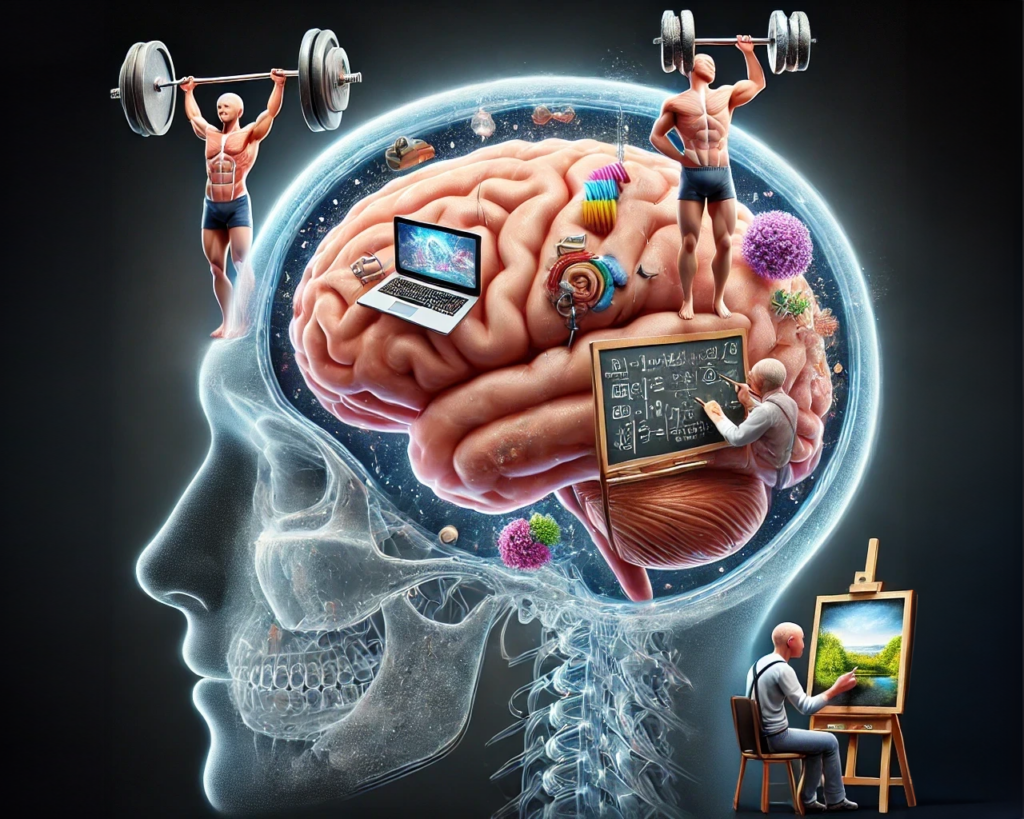💊Neuroplasticity
Neuroplasticity refers to the brain’s ability to modify, change, and adapt both its structure and function throughout life in response to experiences, learning, and even injuries. It challenges the older belief that the adult brain is a static organ incapable of change. The most well-known forms of neuroplasticity are synaptic plasticity and structural plasticity:
- Synaptic plasticity: Changes occur in the strength of existing synaptic connections between neurons, which are the basic units of communication in the brain. This is particularly active during learning and memory formation.
- Structural plasticity: Involves the formation of new synapses (connections) between neurons or even the creation of new neurons, a process known as neurogenesis, which mainly occurs in the hippocampus, a region crucial for memory.
Neuroplasticity plays a key role in functional recovery after brain injuries such as strokes. For example, surrounding neurons may reorganize to take over functions lost due to injury. A landmark study by Dr. Eleanor Maguire showed how the hippocampus of London taxi drivers enlarged after extensive navigational training, a testament to the brain’s adaptability.
Further studies on experience-dependent plasticity have demonstrated that this process occurs not just in response to learning but also to sensory deprivation. Blind individuals, for instance, often experience enhanced tactile or auditory processing, a result of brain areas originally responsible for vision adapting to process information from other senses.
🤔Why You Need to Know:
Understanding neuroplasticity is crucial because it explains how habits are formed and why learning new skills is possible at any age. It’s the basis for improving cognitive functions and adapting to challenges. Whether you’re recovering from brain injury, learning a new language, or developing a new habit, neuroplasticity plays a central role.
📝Action Items:
Engage in Lifelong Learning:
Research from Harvard Medical School showed that engaging in cognitively stimulating activities like learning a new language or playing musical instruments promotes neuroplasticity and reduces the risk of cognitive decline. A study published in Nature Neuroscience found that adults who took up juggling increased gray matter in areas related to visual motion processing. Even brief daily practice (around 30 minutes a day) can induce structural brain changes (Harvard study on cognitive stimulation, Nature Neuroscience on juggling).
Exercise Regularly:
Physical activity boosts neuroplasticity by increasing Brain-Derived Neurotrophic Factor (BDNF), a protein that supports the survival and growth of neurons. A study from the University of Illinois found that individuals who engaged in aerobic exercise (3x a week for 45 minutes) had improved connectivity in brain regions related to memory and cognition. Even light exercise like brisk walking has been shown to enhance plasticity and improve cognitive function (University of Illinois study on aerobic exercise).
Practice Meditation:
Research published in JAMA Psychiatry demonstrated that mindfulness meditation can increase gray matter density in brain areas responsible for emotion regulation and executive function, after just 8 weeks of daily practice. A separate study from Harvard also showed that long-term meditators had thicker cortical areas related to attention and sensory processing, proving that meditation physically alters the brain (JAMA Psychiatry on meditation, Harvard study on cortical thickness).
🤯 Trivia:
Studies on musicians have shown that those who play string instruments from a young age have more developed areas of the brain associated with finger movement and coordination. This demonstrates that repetitive practice can literally reshape specific regions of the brain



